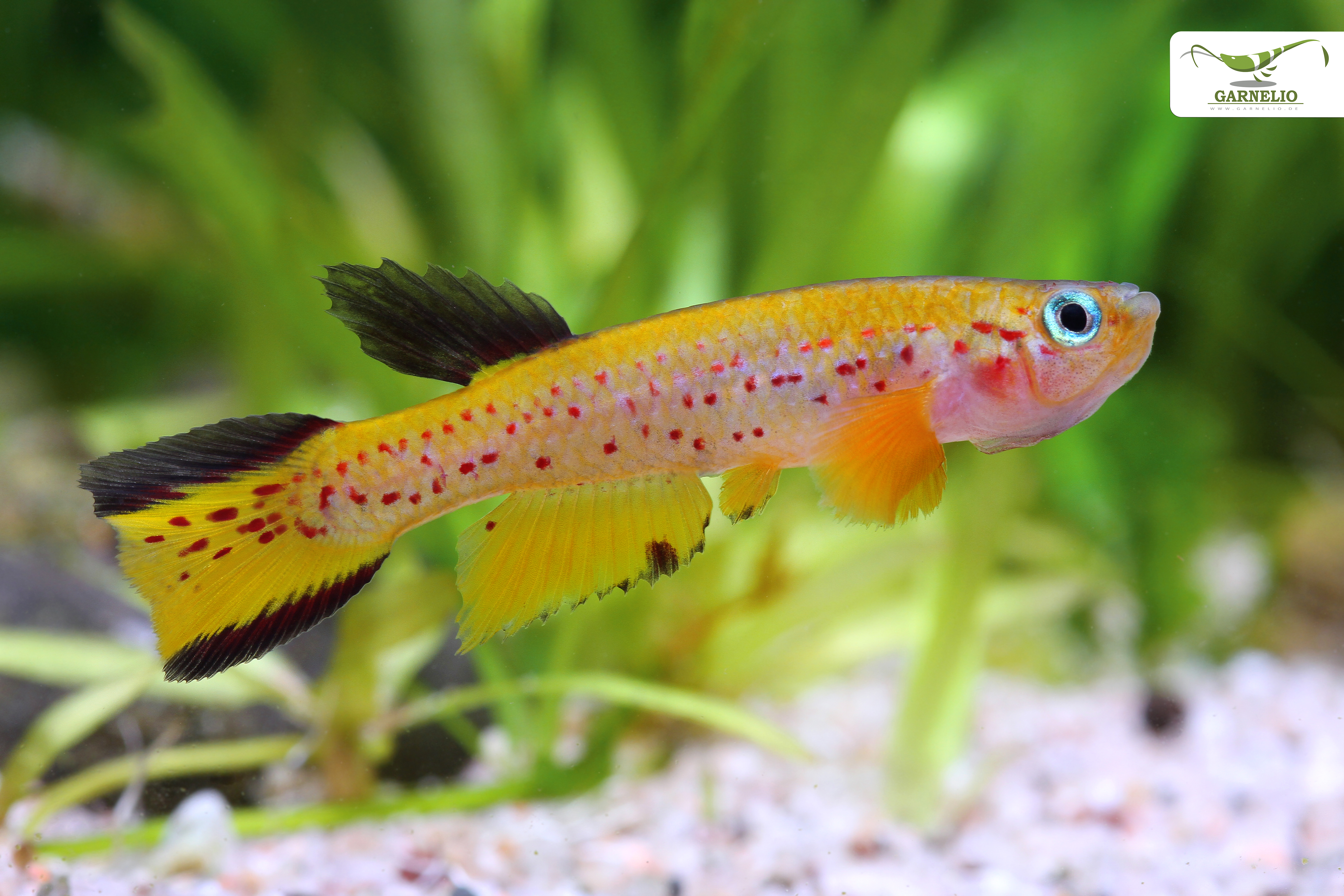Keeping and breeding killifish in the aquarium
Table of contents
- Killifishes from Asia Africa and South America
- Killifishes and their relatives
- Where does the name "killifish" come from?
- Origin and distribution area of killifish
- What do killifishes eat in the aquarium?
- The aquarium for killifish
- Can killifishes be mixed?
- Killifish in a community aquarium?
Killifishes from Asia, Africa and South America
Killifishes are great - the often very colourful egg-laying toothcarps belong biologically to the carp and pike family. In aquaristics, especially the East African Kilifish species are not so often encountered because they use a very fascinating way of reproducing that requires a bit of extra work in the aquarium. However, this effort is more than made up for by their extremely pretty colourful patterning and endearing nature!
Many killifishes live surface-oriented lives and like densely planted aquariums. Here in the Garnelio online shop and in our partner shop Zierfische.de you can buy mainly rather easy to keep Kilifish, which you can also breed relatively well - ideal for beginners in Killifish breeding!
A distinction is made between the egg-laying toothcarps in
- annual
- and non-annual
killifishes. The annual species are short-lived, their eggs need a dry phase so that the embryo can mature. These egg-laying toothcarps live in waters that dry out.
The non-annual species, on the other hand, live in waters that do not necessarily dry out or only partially dry out. They are perennial and their eggs also mature in the water.
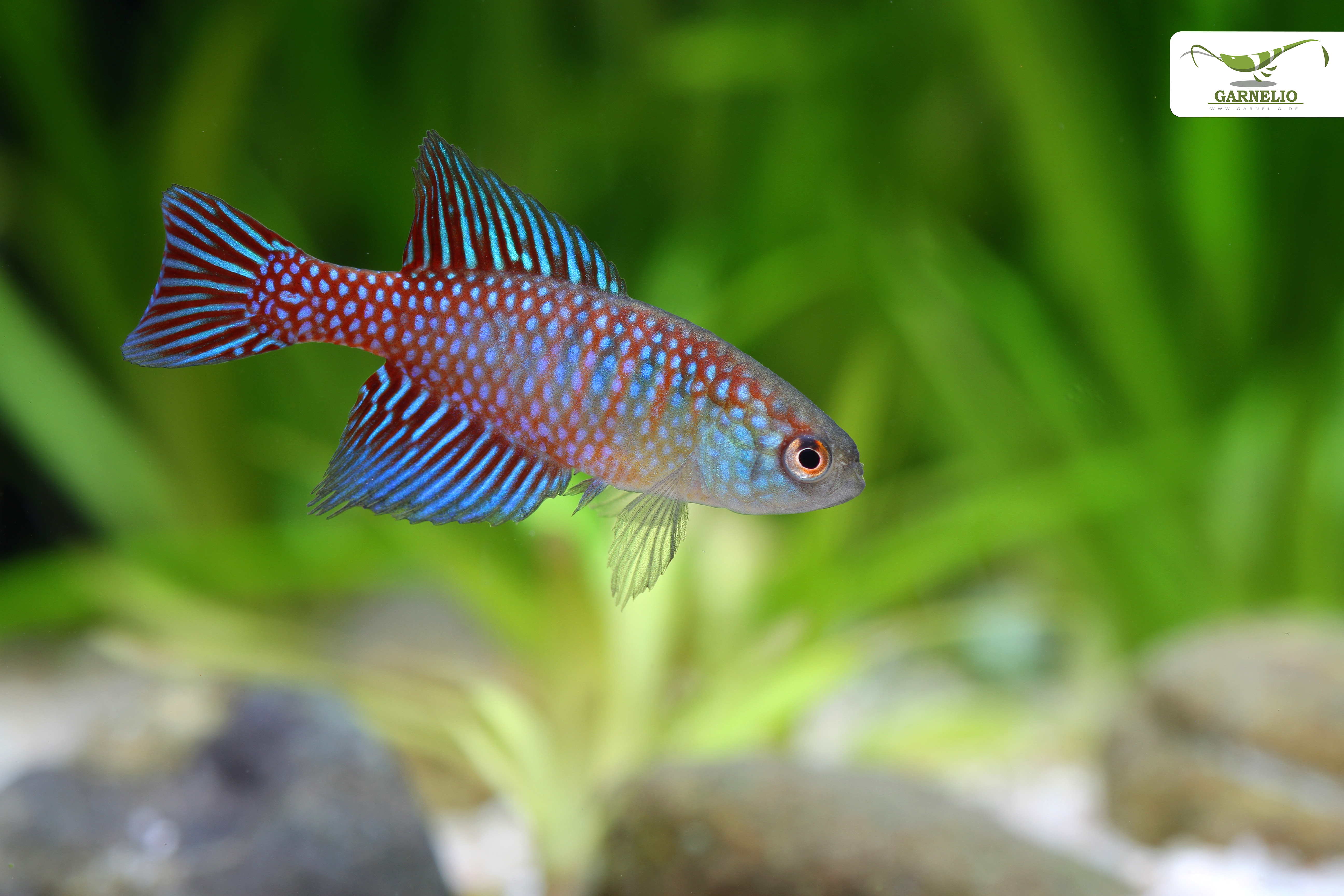
Killifishes and their relatives
Kilifish, as egg-laying toothcarps, belong to the order of toothcarps or Cyprinodontiformes - they are distant relatives of the live-bearing toothcarps, i.e. Guppies and Endler Guppies, Platies, Mollies and Swordtails. Rice fish such as the neon rice carp also belong to the distant relatives of the tooth carps.
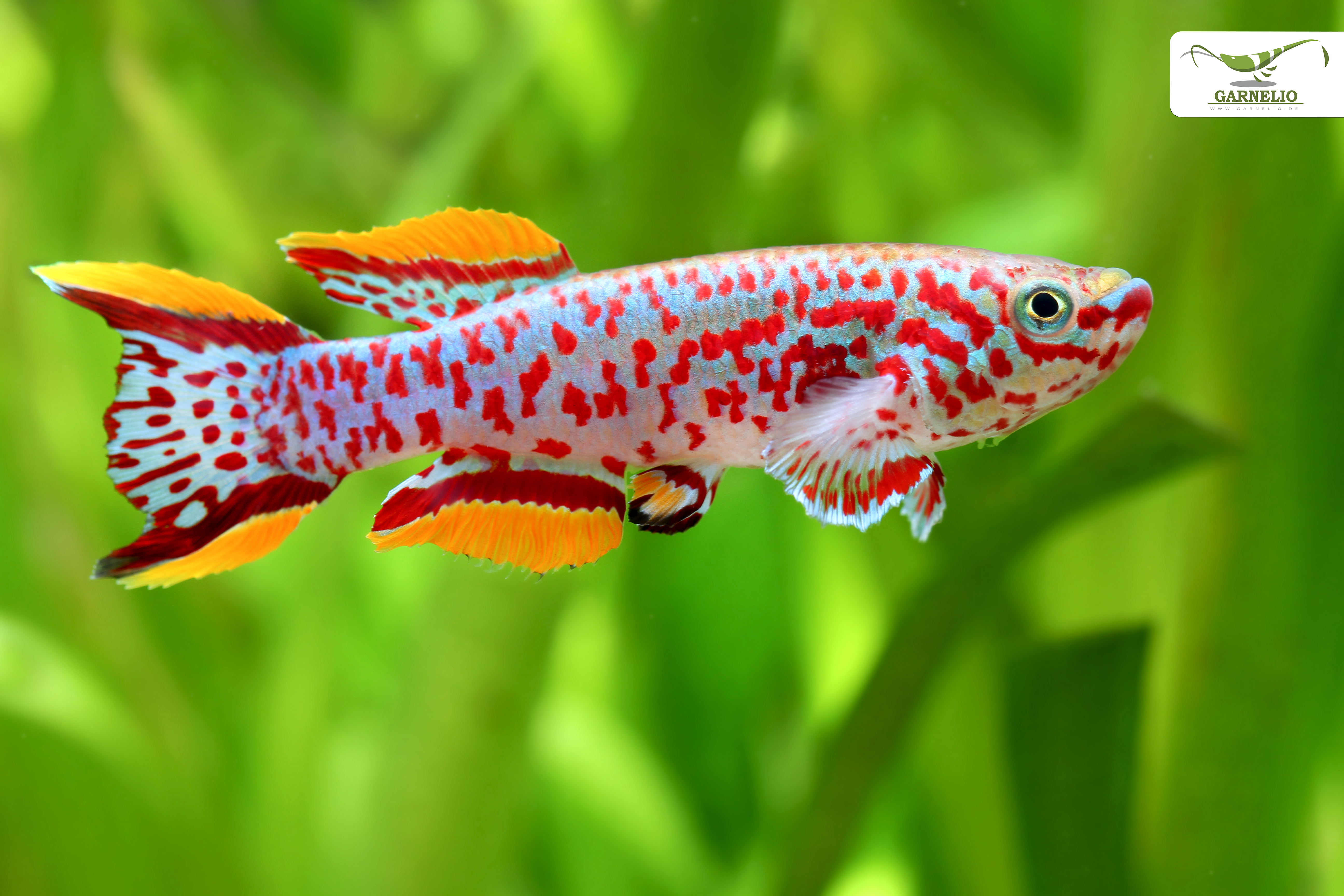
Where does the name "killifish" come from?
However, only the egg-laying toothcarps are called kilifish. The strange name comes from Old Dutch. The word "kil" was used for small pools of water or meadow ditches, and when the German David Johann Schoepf found small colourful fish in this kind of water in 1788 in the area where New York is today, the name Killifish was almost self-explanatory. When he discovered it, it was probably Fundulus heteroclitus, but today the name killifish is commonly used for all egg-laying toothcarps.
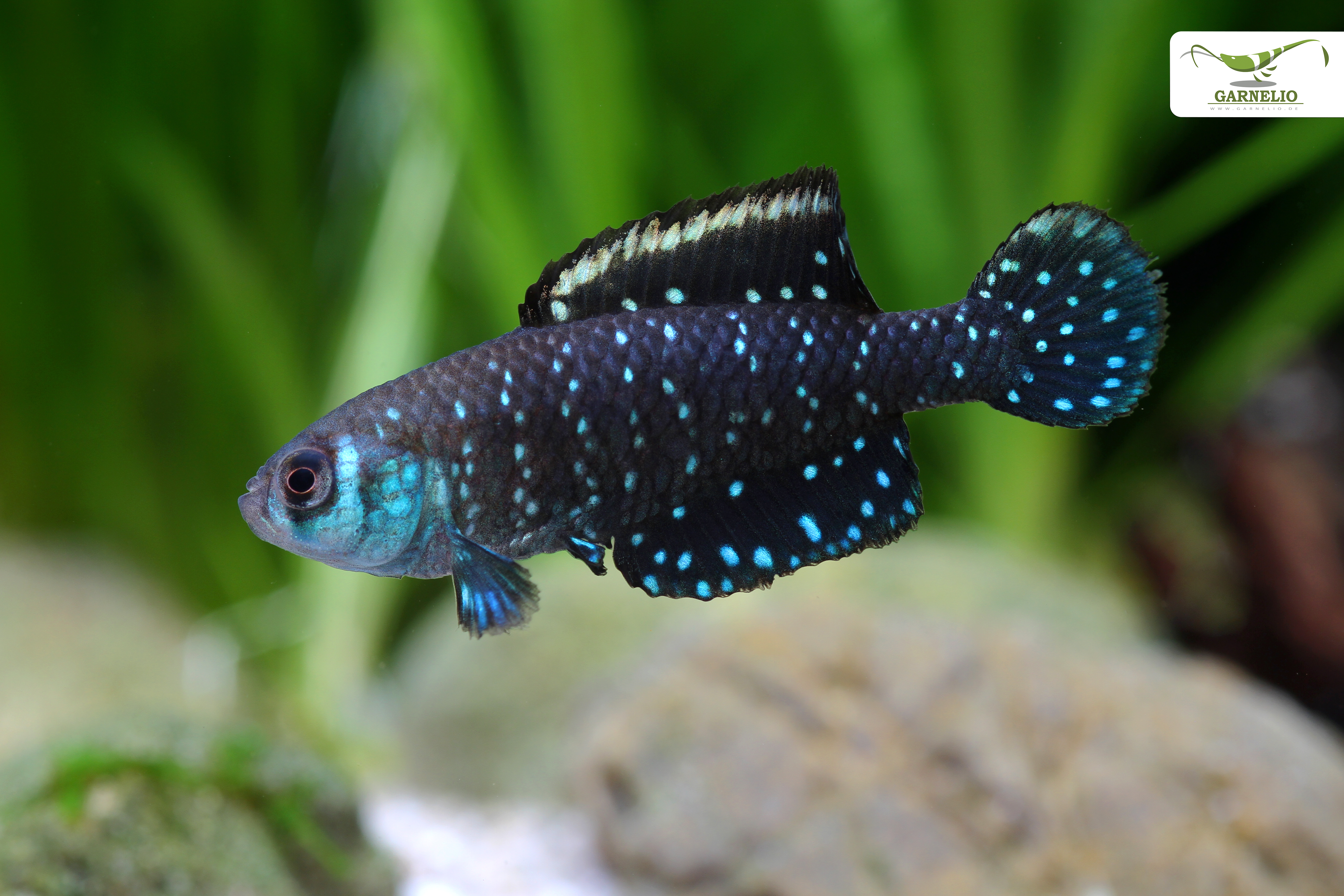
Origin and distribution of the killifish
Egg-laying toothcarps are found in North and South America, southern Europe, Asia and Africa. Many species of the colourful pikefish and killifish are adapted to life in waters that temporarily dry out partially or even completely - in nature, most killifish live in small watercourses, in ditches and in puddles. For this reason, many species of egg-laying toothcarps jump well and far - the aquarium for killies must therefore always be well covered, the fish are not suitable for open aquariums. However, not all species of killifish are as short-lived as their habitats would suggest - there are many, many species that can be kept persistently in the aquarium for several years - and that can also reproduce well in the aquarium without "special treatment".
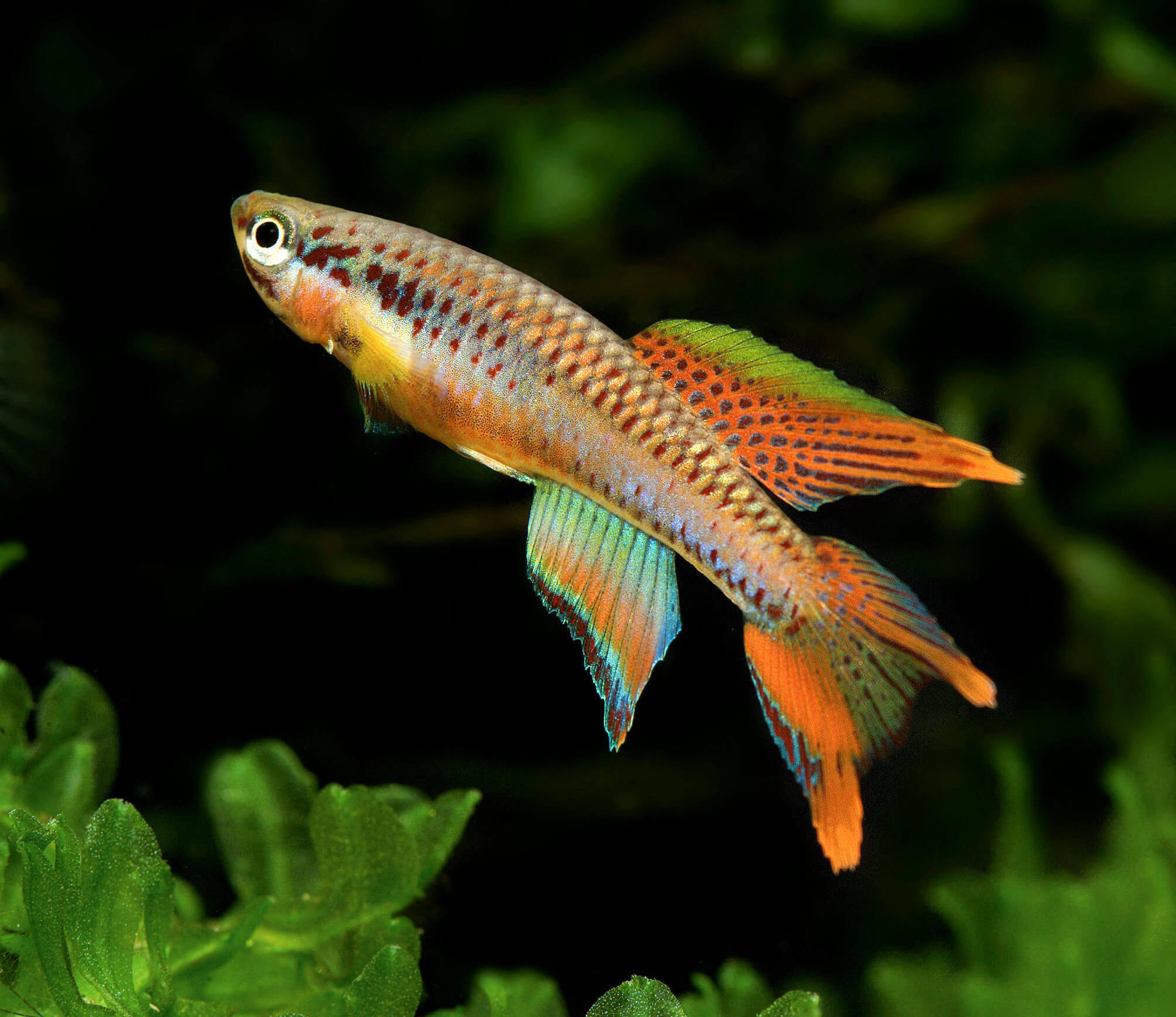
What do killifishes eat in the aquarium?
Killifishes are carnivores without exception. The egg-laying toothcarps are skilled hunters and are therefore always happy to have live food in the aquarium.
After a period of acclimatisation, killies will also accept frozen food. For this purpose, it is best to always add some frozen food when feeding live food, so that the fish learn to snatch at these food animals as well. The proportion of frozen food is gradually increased until the aquarium fish can also eat frozen food without any problems.
A good alternative are our NatureHolic foods for carnivorous fish, for example our Bettafeed for carnivorous fighting fish is also suitable for killifish in terms of size. The acclimatisation works in the same way as with frozen food. It's best to order it right away!
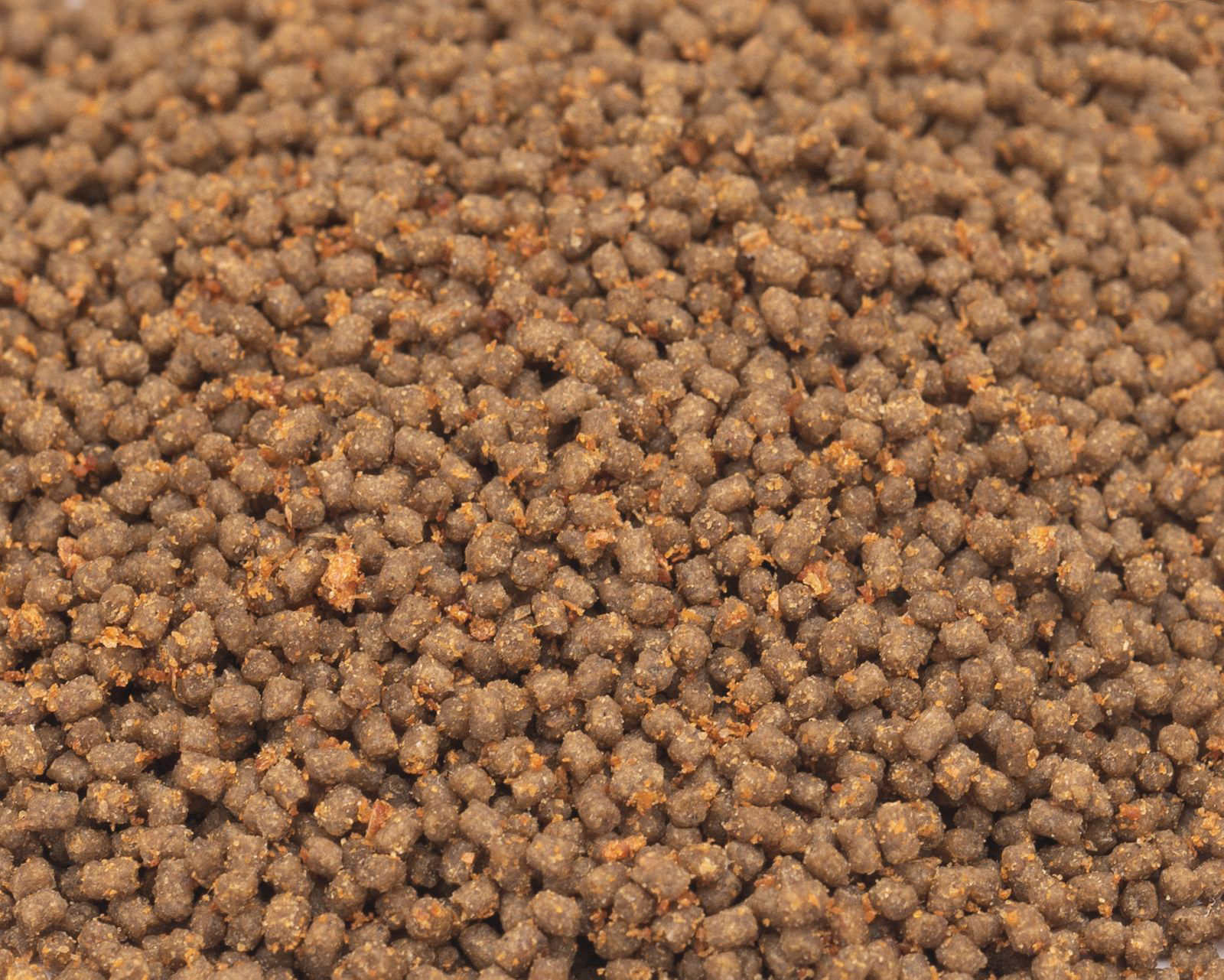
The aquarium for killifish
Killifishes can be kept well in planted aquariums. The size of the aquarium depends somewhat on the size of the individual species and of course on their liveliness. Basically, free swimming space in the middle of the aquarium does well, while the edges can happily be well planted. Many pikelets and carps are more surface-oriented and can therefore be kept with shrimps of appropriate size or also with bottom fish such as catfish or armoured catfish, if you do not want to keep fish exclusively from their biotope. A dark substrate makes the colours of the beautiful killies shine even more intensely. Roots and stones provide structure in the aquarium and offer hiding places for the nice egg-laying toothcarps.
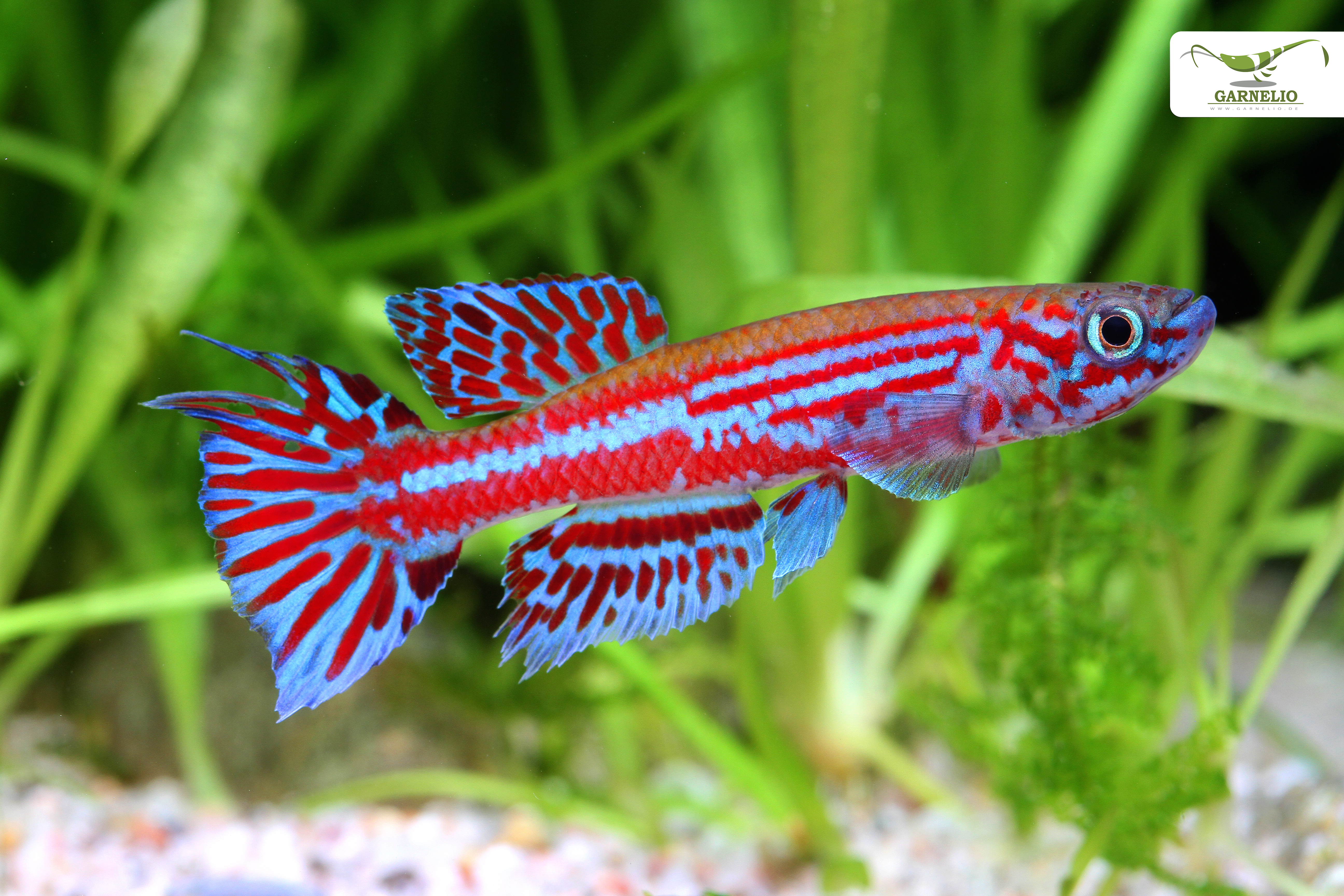
Can you mix killifishes?
The beautiful bright colours of killies are tempting, so you might get the idea of keeping several species. This works quite well if the fish have the same requirements.
What you should not do under any circumstances, however: Keep species from the same genus or even different site variants of the same species - they could mix, and it would be a great pity for the special fish if their special features and characteristics were diluted or even disappeared.
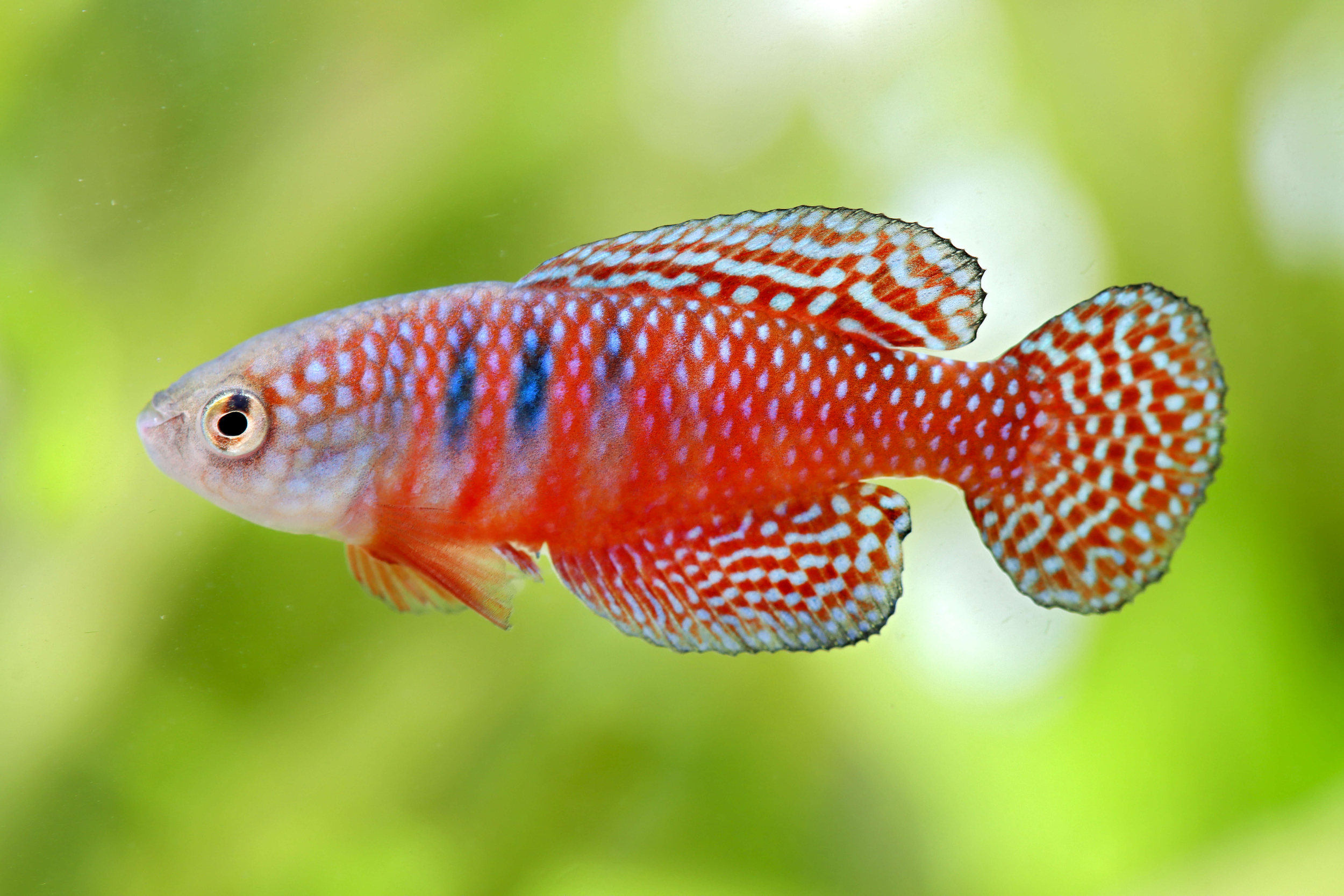
Killifish in a community aquarium?
You can keep robust killifish species in a community aquarium without any problems. Killifishes that like to live in shoals are generally unproblematic candidates for a community aquarium with the right water values. The killies, which are usually very surface-oriented, are generally ideal partners for snails in the aquarium as well as for bottom fish such as smaller catfish or armoured catfish. You can even keep the smaller killies with dwarf shrimps and dwarf crayfish. However, the crawlers need lots of good hiding places! Remember, though: Whatever fits in the mouth will be eaten - especially baby shrimps tend to be eaten.
